VMworld: Virtualization Heads Towards The Cloud
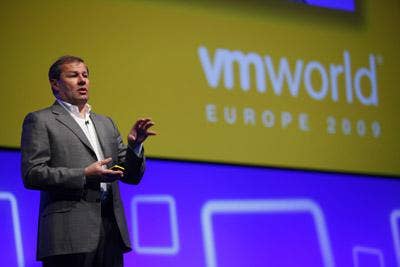
VMworld Europe 2009 was held in Cannes, France the week of Feb. 23, attracting more than 4,000 attendees.
A smaller version of the VMworld conference held annually in the U.S., VMworld Europe brought together its founding company, VMware, and a host of partners and competitors such as Microsoft and Citrix to show the latest in server and desktop virtualization technologies.
Check out some of the new technologies highlighted at the show.
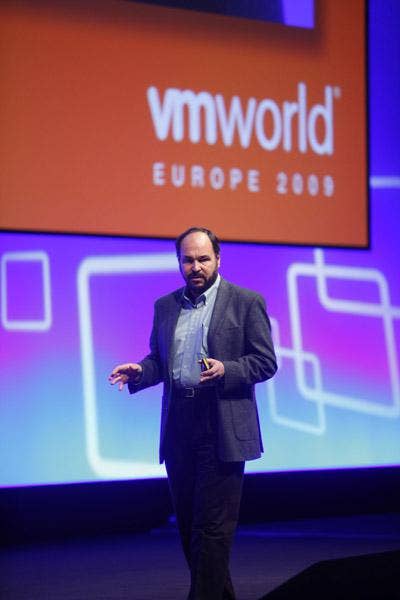
VMware on Tuesday used the VMworld Europe 2009 conference to unveil its first concrete steps in building a cloud computing architecture.
The company's ultimate goal is to allow customers to tie their internal compute clouds with multiple external clouds from a variety of service providers into a single interoperable cloud.
VMware is not looking to build the cloud, but instead wants to be the technology of choice for enabling interoperability between clouds from multiple providers.
To make this happen, VMware plans to release the first version of its Virtual Datacenter OS, or VDC-OS, later this year. The VDC-OS is a software platform that aggregates servers, storage and networking to allow compute capacity to be delivered as an internal cloud.
VMware is also preparing to release vCloud technology, which is aimed at making internal and external clouds work together seamlessly and includes a vCloud API to allow customers to work with multiple service providers. That API also allows customers access to resources across both their internal clouds and in multiple external cloud providers.
Also coming this year is the VI Client, a management application that will allow customers to manage the virtual resources in their internal and external clouds.
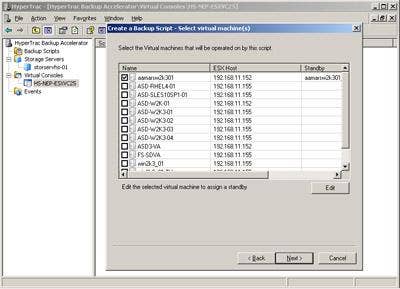
Citrix is looking to undercut VMware's huge share of the server virtualization software market by offering its XenServer technology free of charge and by releasing its new Citrix Essentials technology to manage virtual servers created with both XenServer and Microsoft's Hyper-V.
Citrix used VMworld Europe to unveil a revamped version of its XenServer virtualization platform, which is expected to be available for free starting in March to any user for unlimited production deployment.
While basic hypervisors have been free for years, the new XenServer product differs in that it has advanced features approaching those of VMware's ESX offering, including XenMotion, which is live virtual machine motion, resource pooling on up to 32 physical server hosts.
The new Citrix Essentials comes in two primary versions: Citrix Essentials for XenServer manages virtual machines created using XenServer, while Citrix Essentials for Microsoft Hyper-V, also known as "Project Encore," does the same for Microsoft's technology.
It includes Automated Lab Management, which streamlines the process of building and delivering applications from the development lab to the production server; StorageLink, which lets customers use the native features of their existing storage infrastructures in a virtualized environment; Dynamic Provisioning Services, which eases the management of virtual and physical server master images; and high-availability features such as automatic restart if there is a host or virtual machine failure.
Versions of Citrix Essentials for both XenServer and Hyper-V are slated to ship on April 7 with a suggested retail price of between $1,500 to $5,000 per physical server.
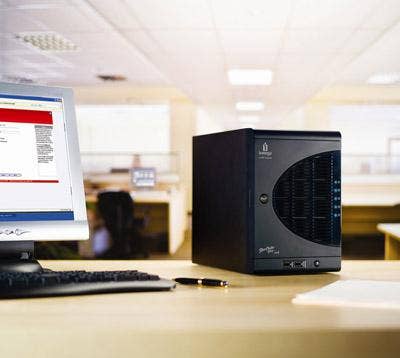
Iomega, an EMC company, said at VMworld Europe that its Iomega StorCenter ix2 and Iomega StorCenter Pro ix4-100 desktop NAS products have received VMware Ready Certified status to offer shared storage in VMware environments.
With the certification, small businesses or remote offices can use the StorCenter NAS appliances to provide networked storage functions to multiple virtual servers on a single host server, Iomega said.
For example, Iomega said, a small business running Microsoft Exchange on one server and Microsoft Dynamics GP ERP on another server can virtualize the two servers onto a single host server with VMware and store the data for both on the NAS appliance.
The StorCenter ix2 NAS can be configured with two hard drives, while the StorCenter Pro ix4-100 NAS can be configured with four drives.
The StorCenter ix2, which Iomega said is suitable for groups of up to 12 users, is priced at $299.95 with 1TB of capacity or $479.95 with 2TB of capacity. The StorCenter Pro ix4-100, which Iomega said works with up to 25 users, is priced at $799.95 with 2TB of capacity or $1,299.95 with 4TB of capacity.
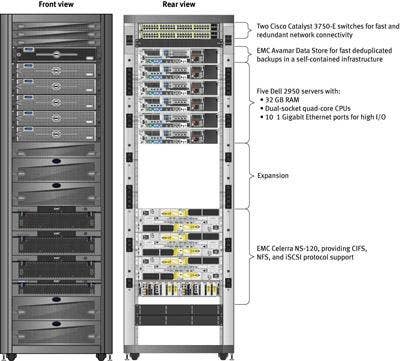
EMC used VMworld Europe to unveil two new EMC Proven Solutions, which combine its storage hardware platforms and its backup and recovery software with VMware compatibility in fully tested and validated reference architectures to ease deployment and improve customers' performance, backup and recovery, high availability and manageability.
The first offering is the EMC Integrated Infrastructure for VMware. This midsize company and remote office solution is built on EMC's Celerra family of unified storage systems, which offer iSCSI, Fibre Channel and NAS connectivity, and which also has built-in data deduplication technology from EMC's acquisition of Avamar.
Also shown was EMC Backup and Recovery for VMware. It combines EMC's Clariion CX4 series of midrange storage systems, Replication Manager and EMC SnapView software to off-load the backup resources from the production VMware ESX server environment, and Avamar deduplication software.
Both solutions have been certified to work with VMware ESX servers.
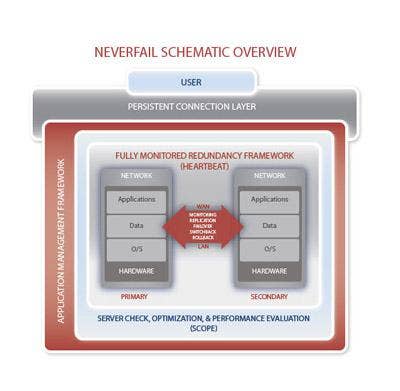
Neverfail used the VMworld Europe conference to unveil an OEM license agreement with VMware to help provide customers protection against planned and unplanned downtimes.
Neverfail is an Austin, Texas-based developer of continuous availability and disaster recovery software, which helps customers remain continuously connected to live software applications regardless of hardware, software, operating system or network failures.
Under the new agreement, VMware will incorporate Neverfail's continuous availability technology and application management framework software into its new VMware vCenter Server Heartbeat, which monitors and manages the automatic failover of VMware vCenter Server.
VMware vCenter Server Heartbeat helps protect against planned and unplanned downtime for VMware vCenter Server and helps maintain the availability of such functions as VMware's VMotion technology for dynamic migration of virtual servers and VMware's Distributed Resource Scheduler for dynamic rescheduling of resources.
The Neverfail technology replicates the VMware vCenter Server configuration and data to a passive standby server, and in case of a failure can restart the entire VMware vCenter Server instance on the passive server.
VMware vCenter Server Heartbeat will be available in March.

FalconStor Software, Melville, N.Y., introduced its new HyperTrac Backup Accelerator for VMware Consolidated Backup. HyperTrac integrates with FalconStor's Network Storage Server (NSS) storage virtualization and provisioning platform.
HyperTrac further extends FalconStor NSS services to VMware Infrastructure by optimizing VMware Consolidated Backup in order to minimize the impact of those backups on virtual servers and their related storage.
The result, FalconStor said, is a "no-impact backup" that increases the backup performance for virtual servers and eliminates the traditional backup window required by many traditional backup solutions for physical environments.
VMware Consolidated Backup uses snapshot technology to enable hot backup of running virtual machines. Those snapshots are maintained by the VMware ESX host during the backup process, while any changes to the virtual servers during the process are also backed up. HyperTrac creates standby virtual machines on a separate VMware ESX host dedicated to backup processes, and uses FalconStor thin snapshots to handle the backup processes, FalconStor said.
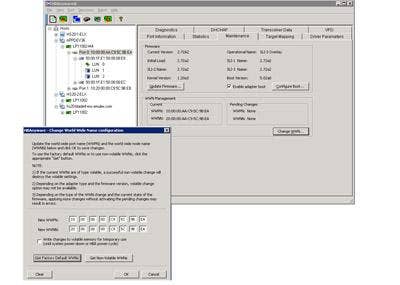
Emulex, Costa Mesa, Calif., demonstrated the new virtual port (Vport) mapping and CIM-based management capabilities for VMware ESXi in its upcoming release of HBAnyware 4.1.
Emulex HBAnyware allows centralized control of the vendor's LightPulse Fibre Channel Host Bus Adapters (HBAs) and its Fibre Channel over Ethernet (FCoE) Converged Network Adapters.
The new release allows the seamless management and migration of virtual machines over 8-Gbps Fibre Channel and FCoE storage networks using VMware VMotion technology.
New with version 4.1 is Vport mapping, which Emulex said offers IT managers end-to-end relationship mapping between virtual ports and virtual servers within a single management window, making it easier to track performance bottlenecks and reprovision virtualized resources.
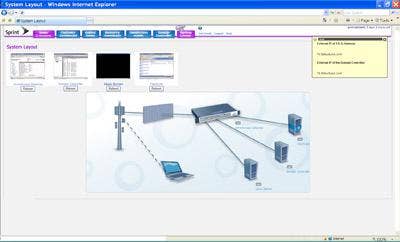
IT Structures, Menlo Park, Calif., a developer of on-demand virtual enterprise software evaluation services, said it will support VMware's vCloud initiative.
The company's Virtual Sales Engagement, first launched in January 2008, allows enterprise software and appliance vendors to orchestrate secure, Web-based evaluations and fully functional enterprise proofs of concepts for prospective customers and partners.
By leveraging the VMware vCloud API, IT Structures allows software and appliance vendors to set up full-featured software deployments accessible to potential customers in a Software-as-a-Service (SaaS) model. This lets prospective customers test and evaluate new enterprise software offerings without the need for local system installation, integration or on-site support, IT Structures said.
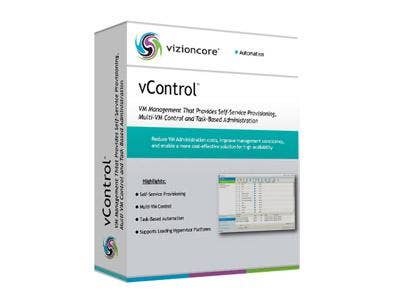
Vizioncore, Buffalo Grove, Ill., previewed its latest virtual machine automation console, vControl. The product allows the self-service provisioning, control and task-based automation of virtual servers across multiple platforms, including VMware ESX/ESXi, Microsoft Hyper-V and Citrix XenServer. Administrators can manage single or multiple virtual machines one at a time, or simultaneously.
Vizioncore also showed a new version of its vRanger Pro software for speeding the backing up and recovery of data in virtual server environments. New to vRanger Pro are such capabilities as direct-to-target backups, SQL support and instant file level restore.
The products are expected to be available in the near future, Vizioncore said.
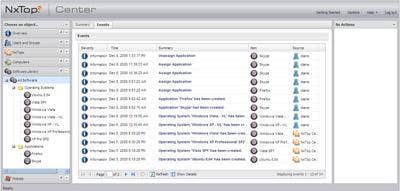
Virtual Computer, Westford, Mass., showed the final beta of its NxTop Engine at VMworld Europe.
NxTop is software that provides life-cycle management for virtual desktop PCs that are configured on end-user computing devices such as laptop PCs. It provides an agent-free way to update applications run on virtual PCs in order to make such PCs reliable, manageable and secure while not impacting their performance.
NxTop isolates virtual desktops from each other to prevent malware from an unmanaged desktop from compromising a virtual desktop.
It also allows a single PC image to be provisioned across thousands of users for quick building and patching of virtual PCs.
The virtual PCs are encrypted and feature a tamper-proof boot process to prevent booting of a virtual PC that has been compromised.
The final release of NxTop is slated for the end of March.
In January, Virtual Computer received $15 million in venture funding from Citrix and two capital venture firms.
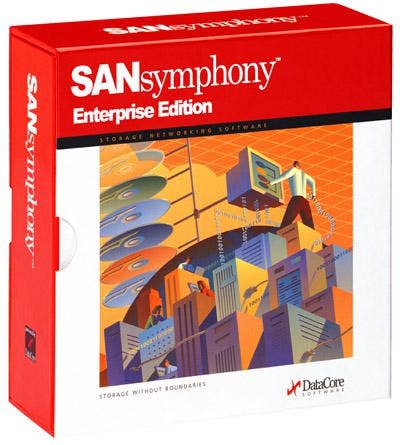
DataCore, Ft. Lauderdale, Fla., used VMworld Europe to show new VMware Ready Certified versions of its SANmelody and SANsymphony storage virtualization software.
SANmelody converts standard Intel/AMD servers, blades or virtual servers into storage servers that virtualize disks and serve them over existing networks to application servers. SANsymphony pools disk space from multiple devices, automatically allocating enough capacity on a dynamic basis to applications.
SANmelody 3.0 and SANsymphony 7.0 now support 64-bit caches, which translates to up to 1.6TB of cache per node, which the company said increases the performance of virtual machines. Behind the caches, VMware customers can grow their storage pools to multiple petabytes, DataCore said.
The two applications also provide high availability of the storage pools in VMware environments, and offer thin provisioning of virtual disks so that unused physical storage capacity is not tied to specific applications.
They also feature a plug-in for VMware's Virtual Infrastructure Client to allow administrators to nondisruptively provision, share, clone, replicate and expand virtual disks among physical servers and virtual servers.
SANmelody 3.0 and SANsymphony 7.0 are expected to start shipping in March.